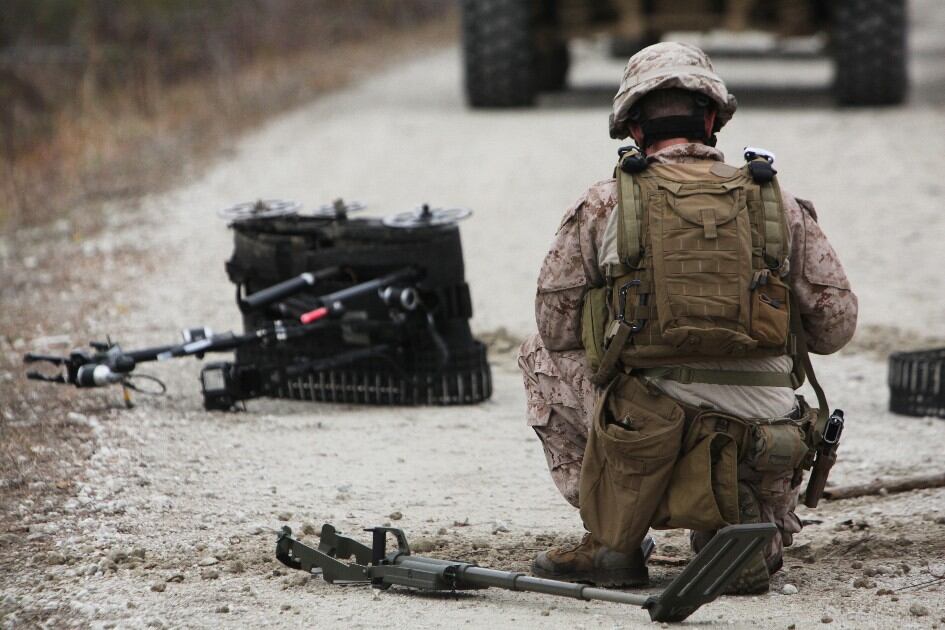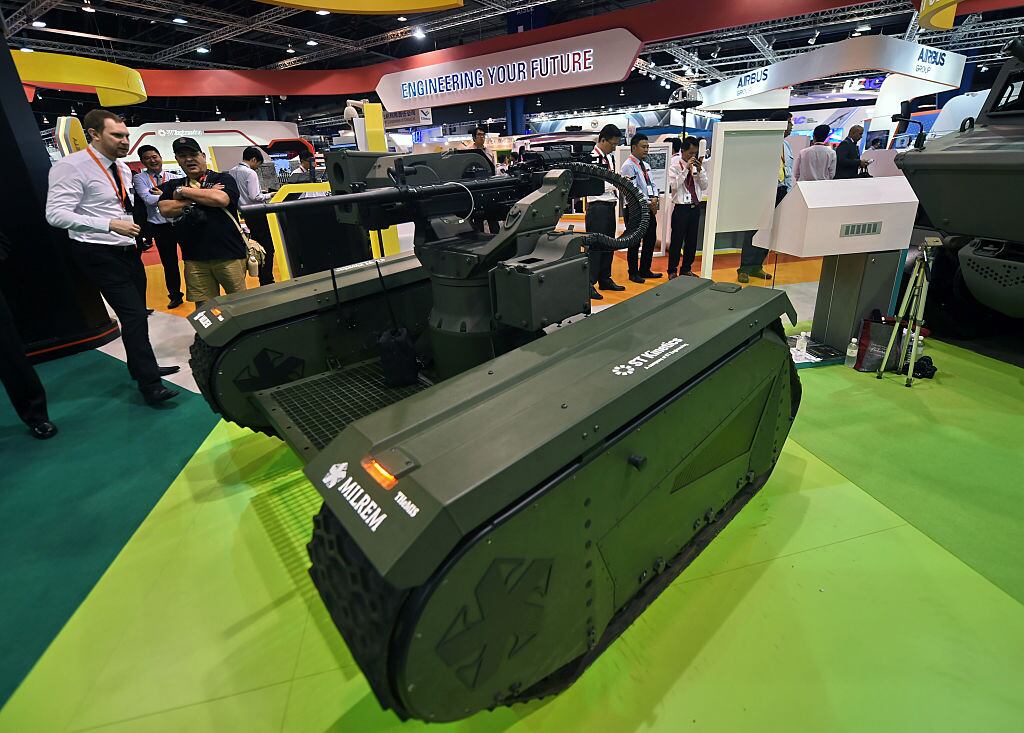WASHINGTON — With the presence of drones ubiquitous in the skies, industry and international partners are turning their eyes closer to earth in an attempt to cash in on a growing sector: unmanned ground vehicles.
“UGV market growth has historically been slow and steady, mostly S&T and niche procurements. What we’re seeing now is an inflection point,” said Joshua Pavluk, a principal with Avascent. “There’s a lot of activity happening and several DoD new starts happening nearly all at once.”
That inflection point is partly the result of improved autonomy and navigation opening up opportunities, Pavluk said. But there is also a desire to see how these systems can transition from sole-mission capabilities, such as explosive ordnance disposal, to multi-mission systems capable of doing ISR, EW and communications.
RELATED

According to a report from the Center for the Study of the Drone at Bard College, total spending for ground drones in FY19 was set at $429 million, of which only $86 million is for procurement — DoD planned to buy 134 new systems during the fiscal year — and the rest for research and development. That pales in comparison to the $6.05 billion the Pentagon planned to spend on UAVs, and half the expected $982 million in naval drones.
But that number shows steady growth, doubling in just two years from $212 million in FY17 and $310 million in FY18. And while explosive ordnance disposal systems still represent the biggest spending from the Army in this arena, it will likely be overtaken by programs such as the Army Common Robotic Systems and Robotic Ground System Advanced Technology Development.
“The market won’t match overall UAS spending levels anytime soon, but it’s fast growing, and there’s opportunity for the taking,” Pavluk said.
However, Michael Blades, an analyst with Frost and Sullivan, is more subdued in his predictions.
“It's a significant market and it is growing, but not at the levels of sea or air systems, or even counter-drone capabilities,” Blades said. “We will see some unmanned-unmanned teaming between UAS and UGV, but the land market for unmanned will be orders of magnitude smaller than the markets for air and maritime.”
From a competition standpoint, Blades sees “the usual suspects” who are already in the market continuing to dominate in the coming years. And internationally, there are only a few players, with the market largely dominated by Israel.
Could that change in the future? The international market generally lags behind the U.S. on such capabilities, Pavluk said, but he noted that “other countries will get in on the act, and it doesn’t have to be large ones” to try and participate.
RELATED

He pointed to Estonia as a leader in the arena, particularly in the commercial sector. And indeed, Estonia has clearly zeroed in on the UGV market as a niche defense area they can move into.
Joined by Latvia and Finland, Estonia this summer announced their intention to develop a military unmanned ground vehicle under the EU’s PESCO umbrella. The system as described would be a semiautonomous companion for soldiers on the ground, which can reduce the load being carried and increase decision-making speed. In addition to an actual vehicle, the project would develop an autonomous control system, a cyber defense solution and an integrated network of sensors.
Estonia’s defense minister Juri Luik told Defense News in August that “There’s no doubt that should such a project be fruitful, this would be adding value [to] the Estonian companies.”
“The aim of these projects is to create new capabilities which would have added value, both from the point of technology, but also, of course, helping the industry,” Luik said. “While the UAV [market] is a very well-developed sector, the ground-based unmanned vehicles is really something where Estonian companies have made great strides already. There is a lot of international interest.”
Aaron Mehta was deputy editor and senior Pentagon correspondent for Defense News, covering policy, strategy and acquisition at the highest levels of the Defense Department and its international partners.








